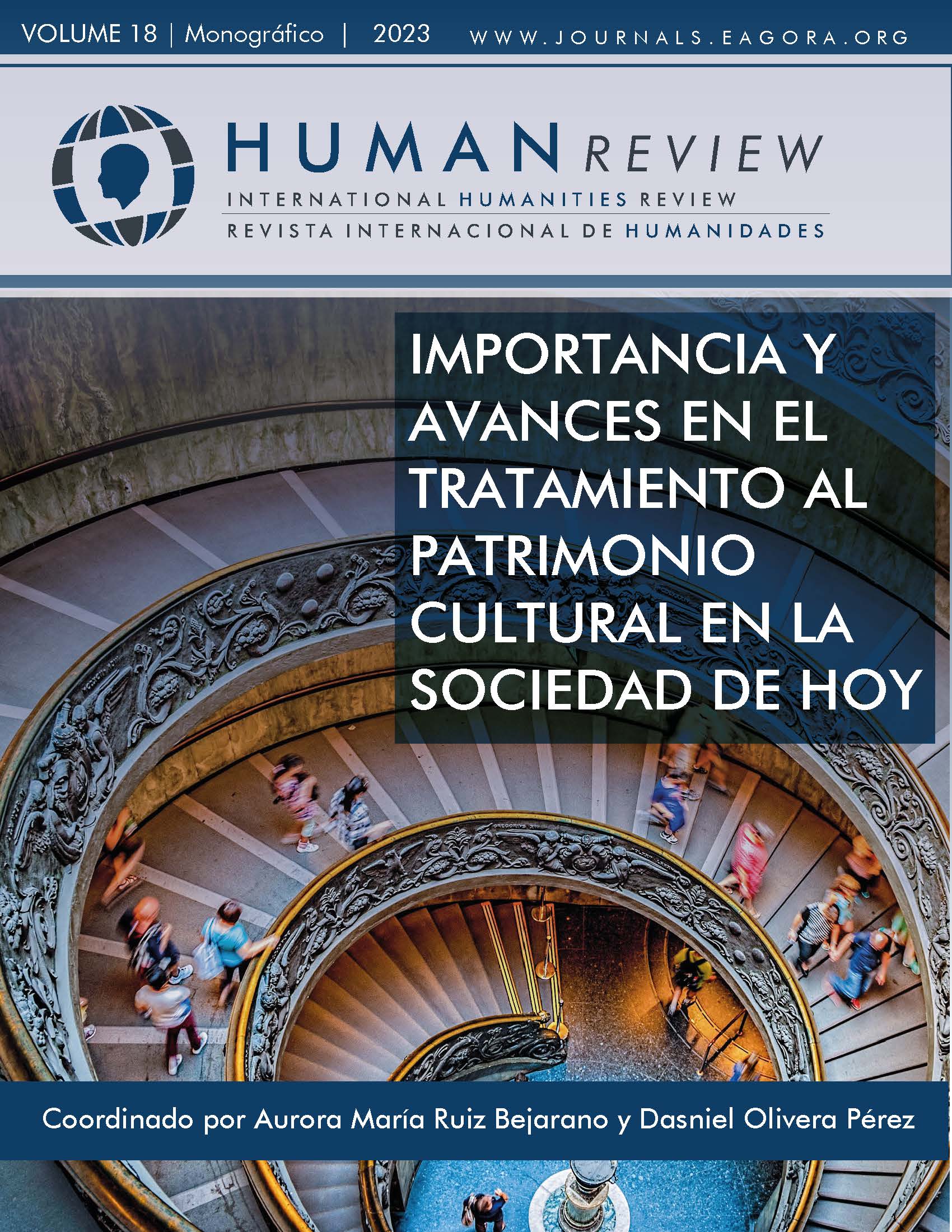Tourists, lard and pork greaves. Interculturality and food practices in baixo alentejo
DOI:
https://doi.org/10.37467/revhuman.v18.4870Keywords:
Food, Tradition, Poverty, Tourism, Fashion, Baixo Alentejo, (Re)inventionAbstract
The aim of this paper is to think how food practices of a region are transformed into a tourist product and, more specifically, how the poor food of Baixo Alentejo, often considered as “non-food”, is valued in the restaurants at the beginning of 21st century.
We will consider the case of Serpa, a town known for the traditional food practices that are still maintained and the quality offered by its restaurants. Besides, it is an attractive region for tourists, mainly Portuguese and Spanish, who, on weekends, cross the border to try “typical” and traditional food of the region.
References
Barros, V., Carrageta, M., Graça, P., Queiroz, J., & Sarmento, M. (2013). Dieta Mediterrânica -Um património civilizacional partilhado. www.turismodeportugal.pt
Brito, J. (2004). Entrevista com Joaquim Pais de Brito, Estudos Históricos. 33. www.scrib.
Brito, J. (1996). Retrato dee Aldeia com Espelho. D.Quixote
Bucho, D. (2010). Património, Animação e Turismo. 1ª ed. Instituto Politécnico de Portalegre.
Cabral, C. (2011). Património Cultural Imaterial. Convenção da UNESCO e seus Contextos. Edições 70.
Canesqui, A & Garcia, R. (Coords.) (2005) Antropologia e nutrição: um diálogo possível. Editora Fiocruz. SciELO Books. http://books.scielo.org
Carbone, F. (2011). Un Plato, un Pueblo. El Camino de los Sabores. Experience Economy, Creative Tourism, Co-creation. Algarve.
Cohen, E., & Avieli, N. (2004). Food in Tourism. Attraction and Impediment. Annals of Tourism Research, 31(4), 755-778.
Costa, E. (2009). Mistura do dia: a gastronomia e a sua contribuição para o turismo. Revista Eletrônica de Tursimo Cultural, 57-74.
DaMatta, R.(1987). Sobre o simbolismo da comida no Brasil. Correio da Unesco, 15(7):21-23.
D´Encarnação, J. (2012). Cidade, Gastronomia e Património. Revista Memória em Rede, 2(7), 1-12.
Diário da República n.º 171/2000, Série I-B de 2000-07-26, Resolução do Conselho de Ministros 96/2000. https://data.dre.pt
Diário da República n.º 292/2001, Série I-B de 2001-12-19, Resolução do Conselho de Ministros n.o169/2001. https://data.dre.pt/
Flandrin, J.; Montanari, M. (1998). História da Alimentação. Estação Liberdade.
Hall, M., Sharples, L., & Smith, A. (2003). The experience of consumption or the consumption of experiences? Challenges and issues in food tourism.
Halbwachs, M. (1925). Les Cadres Sociaux de Ia Mêmoire . Albin Michel.
Hjalager, A. M., & Richards, G. (2002). Tourism and Gastronomy. Routledge
Goody, J. (1998). Cozinha, culinária e classes. Celta Editora.
Halbwachs, M. (1925), (1994). Les Cadres Sociaux de Ia Mêmoire . Albin Michel.
Kivela, J., & Crotts, J. C. (2006). Tourism and Gastronomy: Gastronomy‘s Influence on HowTourists Experience a Destination. Journal of Hospitality & Tourism Research, 30(3), 354-377.
Mak, H., Lumbers, M., & Eves, A. (2012). Globalisation and Food Consumption in Tourism. Annals of Tourism Research, 39(1), 171-196.
Moletta, V. (1998). Turismo Cultural. SEBRAE/RS.
Moreira, R. (2006). Memória y Património Alimentario: La Importancia de Los Saberes Empíricos, Em VV.AA. Actas do III Congreso Internacional de la Red SIAL sob o tema Alimentación y Territórios. Baeza, (Jaén-Espanha).
Perez, X. (2009). Turismo Cultural. Uma visão antropológica . ACA y PASOS, RTPC. www.pasosonline.org
Piedade, A. (2017a). Esta açordinha até dá vida aos mortos!“- de comida da fome a comida de elite. Em Rabanaque, M.; Hernandorena, M.; Esteyan, A. (2017), (Coord.). Antropologies en transformació: sentits, compromisos i utopies – Congreso de Antropologia. Universitat de València
Piedade, A. (2017b). Migas de assobio e “alentejano gourmet –de comida da fome a comida de elite”. 2º Encontro do Grupo de Investigação Práticas e Políticas da Cultura do CRIA Desafios do ‘turístico’ na actualidade. 25 de Outubro de 2017.Lisboa: ISCTE
Piedade, A. (2018), Entre açordas e perdizes: práticas alimentares no Baixo Alentejo. Seminário Internacional Alimentação, Saúde e Ambiente- sustentabilidade e desafios. 10-12 de Outubro de 2018. Lisboa: FLUL
Quitério, J. (1997). Comer em português. CTT.
Ricolfe, J. et al (2008). Actitud hacia la gastronomía local de los turistas: dimensiones y segmentación de mercado. Pasos -Revista de Turismo y Património Cultural. 6(2 número especial), 189-198. www.pasosonline.org
Saramago, A., et. Al. (2000), Gastronomia e Vinhos do Alentejo. Ministério da Cultura: Direção Regional de Cultura do Alentejo.
Schluter, R. (2006 a). Gastronomia e Turismo. Aleph.
Schluter, R. (2006 b). Turismo y patrimonio gastronómico, Una perspectiva. Centro de Investigaciones y Estudios Turísticos.
Sharples, R., Mitchell, N., Macionis, N. & Cambourne, B. (2005). Food Tourism around the World
Sobral, J. M. (2007), “Nacionalismo, Culinária e Classe: a Cozinha Portuguesa da Obscuridade à consagração (séculos XIX-XX)”. Ruris, 2, Revista do Centro de Estudos Rurais e Urbanos, 13-52.
UNESCO (2003). Convenção para a Salvaguarda do Património Cultural Imaterial. www.apantropologia.org/
Valeri, R (1989), “Alimentação”, entrada en la Enciclopédia Enaudi, vol. 16, Imprensa Nacional Casa da Moeda: 191-209.
Downloads
Published
How to Cite
Issue
Section
License
Those authors who publish in this journal accept the following terms:
- Authors will keep the moral right of the work and they will transfer the commercial rights.
- After 1 year from publication, the work shall thereafter be open access online on our website, but will retain copyright.
- In the event that the authors wish to assign an Creative Commons (CC) license, they may request it by writing to publishing@eagora.org









